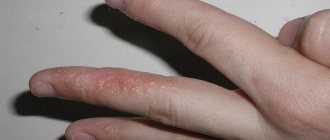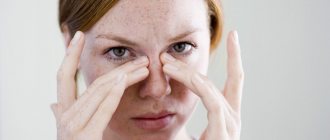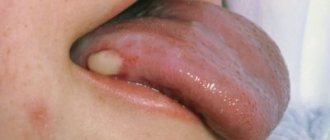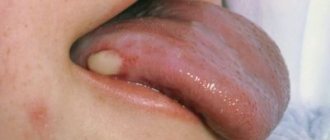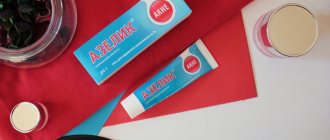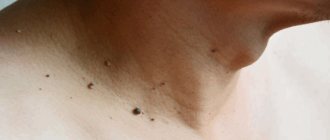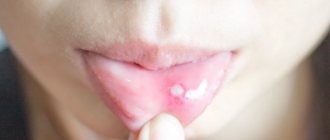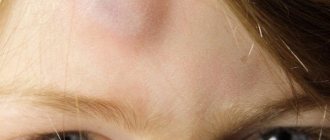- What causes pimples on a baby's head and what do they look like?
- Causes of acne in infants
- How to deal with acne on a baby's head?
- How long will acne last on a baby's head?
- Treatment of purulent and red pimples on the head of a baby
It is especially important for every mother to monitor the body of her child, especially the infant, to make sure that he is perfectly healthy and to respond in time to all possible diseases or disorders that may occur in the first days or months of the baby’s life. Despite the fact that most newborns are advertisements, on television and in magazines have flawless skin, the truth is that most newborn babies suffer from skin diseases. The skin may look unhealthy, but acne is generally not malignant and does not stay on the skin for long. A fairly common condition among infants is baby acne that appear on the scalp What causes acne on a child’s head and how exactly you can cope with this problem we will find out in this article!
Types of rashes
In appearance and structure, the rash on the baby’s skin has different shapes, sizes and colors. Rashes can look different:
- colorless formations;
- small dots;
- large spots;
- pink or red bumps;
- bubbles with clear liquid;
- small pustules;
- red crust;
- peeling of the skin.
This variety of rashes depends on the causes. Oddly enough, there are enough reasons for a rash on the skin of a newborn, since there are many provoking factors. For example, a prickly heat on the face is recognized as a scattering of small pink pimples. This happens because the small body overheats, and the still unformed sebaceous ducts do not have time to remove fluid from the baby’s body. Rashes are also very often observed with diaper dermatitis.
White pimples
Rashes of this type indicate that the child has begun hormonal changes in the body, namely, the production of sebum (the work of the sebaceous glands) is normalized. In this case, the rash does not cause discomfort to the baby, since it is not even noticeable, it only creates the appearance of sebum, which will come out on its own over time. Also, infants may experience a surge in hormones, which is accompanied by small white acne on their face. Under no circumstances should such pustules be squeezed out or healed, because they will soon go away on their own and will not lead to complications if the rules of newborn hygiene are strictly followed.
Red spots
Such spots on a child’s skin can have various causes. They mainly occur during birth, when capillaries burst due to pressure on the child's body. In other words, they are called birth injuries. They do not pose a threat to the baby and disappear on their own during the first year of life. But there are other reasons for the appearance of red spots on a baby’s face, which are really dangerous to his health. The causes can be both infectious diseases and allergic irritants. For example:
- rubella;
- measles;
- chicken pox;
- scarlet fever;
- impetigo.
Colorless
Such a rash often indicates an allergic reaction, for example, when a child cannot tolerate whole milk. Colorless spots sometimes indicate a disruption in the functioning of the hormone - melanin synthesis, which is responsible for protecting the child’s body from the harmful influences of the environment. Fungal infection, hormonal changes, and excessive excitability of the baby are the main factors in the appearance of this type of rash.
Small pimples
Rashes of this type are very common on the baby’s face. From birth, a small organism is adjusted to life on Earth, including the mechanism of heat regulation. Most often, small pimples signal heat rash. If small pustules (pustulosis) appear on the baby’s face, they indicate hormonal changes. But it should be remembered that such a rash may be the first signal that an infection has entered the child’s body. To avoid complications, consult your doctor immediately for an accurate diagnosis.
Rough skin
Changes in the facial skin of this type of rash in an infant should not be left aside or fade into the background. Harmless factors that affect the skin and make it rough are cold weather, hard water, dry air, etc. These rashes appear on the basis of serious diseases, such as vitamin deficiency, diabetes mellitus, genetic pathology, helminthic infestation, and atopic dermatitis. Also, the presence of rough skin may indicate fungal skin irritation.
How long will acne last on a baby's head?
Baby acne in a baby can appear within a few weeks after birth and can appear during any period of active growth of the baby for a short period of time up to a year. However, acne can also remain on the head for a couple of months. Talk to your child's doctor if the acne does not go away within three months Most often, the doctor prescribes a drug and recommends treating acne in a baby only if the acne becomes severe or is on the head or other parts of the body for a longer period and for a period of more than 3 months, since during this period acne appears on any part of the child’s body of any age, including infants, should pass on their own.
Coconut oil is a powerful natural remedy for long-lasting acne!
Why do acne appear?
In medical terms, acne is called “acne”. A pimple is nothing more than an inflamed hair follicle and sebaceous gland. If the production of subcutaneous sebum increases for some reason, then the pores quickly become clogged with this secretion, and if an infection occurs, inflammation occurs.
This is a brief summary of the mechanism of acne in children of any age. Acne itself can be superficial and deep, localized (for example, only on the face) and confluent (when fairly large areas of different parts of the body are covered with continuous acne areas). A common pore clogged with subcutaneous fat is a comedon. It can be open - “black dots” and closed - white wen. If a bacterial infection occurs, then papules appear - raised hollow pimples or pustules - purulent pimples.
The causes of acne at different ages are different. Let's talk about this further.
In newborns and infants
Neonatal cephalic pustulosis is acne of newborns. Occurs in approximately every third baby. Sometimes it develops in the first days after birth, and sometimes during the first six months of independent life. Most often, pustules and wen are located on the face and head of a newborn. Less often - on the ears and.
The reasons for its appearance are not known to science for certain. Scientists consider two prerequisites as the most convincing versions: hormonal levels and the body’s adaptive abilities. It is believed that the baby is greatly influenced by the level of female sex hormones that the mother “transferred” to the baby during pregnancy and childbirth. In addition, the skin adapts to a new environment - anhydrous. The sebaceous glands have not yet “rehearsed” normal operation under these conditions, so the baby produces more subcutaneous fat than it needs to protect the epidermis.
In preschoolers
The list of reasons that lead to acne in kindergarteners is much wider. First of all, this is improper hygiene, skin contamination, microtraumas (scratches and small abrasions) into which pathogenic bacteria penetrate. Extensive rashes practically do not occur at this age. We are mainly talking about local rashes and single pimples in a child. The location is mainly the upper torso.
Acne at this age can also be caused by poor nutrition—the excessive presence of carbohydrate and fatty foods in a child’s diet. The formation of acne is affected by sweating, if the baby is dressed warmer than the weather requires, if it is hot in the house where the little one lives, then the likelihood of developing acne increases. Sometimes parents themselves are to blame for acne, because they believe that washing the child with baby soap or other cosmetics every day is beneficial. In fact, the skin dries out, loses its protective shell of subcutaneous fat, and the body begins to actively produce new fat in much larger quantities. The pores cannot remove such an amount of secretion and become clogged.
In teenagers
As in infants, acne in adolescents is considered physiological. Acne, starting at age 12, appears due to increased production of sex hormones - estrogen in girls and testosterone in boys. Under the influence of a hormonal riot, all organs and systems of the body are mobilized. Leather is no exception. The sebaceous glands begin to produce huge amounts of subcutaneous sebum.
The locations of acne in adolescents are varied - from the traditional location on the face to acne on the shoulders, above and below the elbow, and even on and in the intimate area. Teenage acne can be superficial, deep, or even draining.
The main reason is hormonal levels, although there are many factors that increase the manifestations of acne. This includes sweating and severe stress that a child experiences during exams or preparation for competitions, during periods of falling in love and due to difficulties in relationships with peers.
The intensity of the rash is influenced by both medications and steroid drugs, which many people begin to take in adolescence for a more pronounced effect from fitness activities.
Symptoms
Pimples on a child's nose can have a variety of manifestations.
Depending on this, doctors make one diagnosis or another.
Prickly heat
The baby's sweat glands are not well developed.
That is why the processes of thermoregulation in children proceed differently.
The situation is further complicated by the fact that there are several types of prickly heat:
- Red
- in this case, the skin changes its shade. In the most difficult situations, it turns bright pink. Rashes with cloudy contents appear on the surface. Red skin color is associated with inflammation. - Crystalline
- many bubbles filled with clear liquid appear on the skin. They burst when pressed. This form of prickly heat is not accompanied by redness. - Papular
- it is characterized by the appearance of pinpoint rashes. They can form large patches on the skin. - Infected
is the most difficult option. In this case, microbes penetrate into the wound formed when the bubble ruptures. Bacterial microorganisms lead to the development of inflammation. There is also a risk of purulent complications.
This form of pathology is accompanied by impaired general health and an increase in temperature.
Skin rashes in children are caused by insufficient functioning of the sweat glands. There are a number of factors that lead to such problems.
These include the following:
- increased humidity in the room;
- violation of hygiene rules;
- The child’s clothes are too warm;
- use of clothing and linen made of synthetic fabrics.
Symptoms of prickly heat may not only appear on the nose.
When such problems occur, the rash can be localized on the neck, shoulders, and armpits. As the disease progresses, acne affects the entire body.
Infections
In some cases, the appearance of rashes is caused by dangerous infectious diseases. This is why it is so important to monitor the child’s condition. The main causes of such problems include the following violations:
The main causes of such problems include the following violations:
- Chicken pox.
This is a viral disease that is accompanied by the formation of red, compacted areas on the skin. The rash affects not only the nose, but the entire body.
- Rubella.
The rashes can be large or small. This disease is accompanied by symptoms of ARVI. Often there is pain in the throat, swelling and redness of its tissues are observed.
- Scarlet fever.
This pathology is accompanied by the appearance of acne on the face. They then attack the entire body. The rash has a bright red tint and rises significantly above the surface of the skin. The temperature also increases and symptoms of sore throat are observed. - Measles.
This viral pathology has a very complex course. In the initial stages, pink spots form. Then they merge into large formations. In addition, additional symptoms arise - rhinitis, headaches, cough, bowel dysfunction.
Sexual crisis
In newborn children, the body faces restructuring.
Throughout pregnancy, the child received sex hormones from the mother.
The main symptoms of this condition include the following:
- mastopathy;
- vulvovaginitis;
- swelling of the genitals;
- micromenstruation;
- acne on the face.
Doctors call this rash hormonal acne. They are small whiteheads that are localized not only on the nose, but also on the forehead and cheeks. This is due to blockage of the ducts of the sebaceous glands. Such rashes do not cause pain and disappear within 2 weeks of life.
Allergic diathesis
A child's consumption of any inappropriate foods can cause allergies.
This condition is characterized by the appearance of characteristic rashes on the skin. Such a rash can be considered a manifestation of the immune response to the influence of irritants.
Allergens include the following:
- Food;
- dust;
- chemical substances;
- medications;
- animal hair;
- plant pollen.
In most cases, symptoms of allergic dermatitis occur with the introduction of complementary foods. If the baby is fed breast milk, the cause of the reactions is a violation of the diet by the nursing mother.
The rash, which is associated with exposure to food allergens, affects more than just the nose.
In this case, the chin and cheeks are also affected. In addition, there is a risk of severe itching.
Treatment of purulent and red pimples on the head of a baby
Although no treatment is usually required for baby scalp acne, pimples that are red or pus-filled can be effectively treated with topical tretinoin or benzoyl peroxide. Since many pimples often go away without any treatment, you should talk Talk to your pediatrician before trying anything like benzoyl peroxide or tretinoin.
Erythromycin gel is another possible treatment option for purulent or red pimples on the scalp of an infant.
Keep in mind that in severe cases, child acne, especially with purulent acne, may not go away on its own even for several months, and sometimes until the child is six months old.
Also keep in mind that common treatments used, such as by parents to treat their acne on the face or body, the use of moisturizers and other creams and lotions, can make childhood acne worse. Since improper treatment can only make acne worse, it is best to These are not festering large pimples, just leave them alone until they eventually go away on their own.
Gentle cleansing of your baby's scalp is recommended to be done with just water and mild soap or baby shampoo on a regular basis once a day. This is usually the best "pimple treatment" until your baby's acne goes away.
Features of treatment
When purulent acne develops in a child, the first step should be to visit a doctor and diagnose the cause. It is necessary to establish why the rashes began to appear.
It is strictly forbidden for children to squeeze out pimples on their own; they can be smeared with special preparations only on the recommendation of a specialist.
To prevent new rashes, you must follow the following rules:
- proper nutrition;
- exclusion from the diet of sweet, flour, fatty foods;
- compliance with hygiene rules;
- timely examination by a dermatologist.
Cosmetic procedures
Cosmetic procedures that may be prescribed to a child include:
- ultrasonic exposure – helps clean pores and normalize microcirculation in skin cells;
- gentle peelings – cleanse pores, eliminate excess dead cells;
- mesotherapy – with the help of medicinal mixtures, inflammation is relieved and the skin is healed.
Medication
If the child is under 9 years old, then self-use of acne remedies is strictly prohibited. They can be harsh on sensitive skin.
Severe acne in a child under 9 years of age is often accompanied by itching, dryness and pain. The above medications will soften inflammation and slow down the production of sebum.
The ionic colloidal solution is gentler, but at the same time destroys bacteria in the skin and helps relieve itching.
If the pimples resemble mosquito bites, provoke pain and do not go away for a long time, then the use of special ointments will be necessary.
At home
In young children, acne can be effectively treated with mild baby soap. You should wash your child with soap once a day, not more often, otherwise the situation will only worsen.
During therapy, it is forbidden to squeeze out the rash. The skin becomes very irritated and the affected area only increases.
As a rule, pimples in children go away on their own. The main thing is to keep your skin clean. If you experience severe discomfort or pain, you should consult your doctor.
How to get rid of acne on the body?
When treating a rash in a child, it is very important to correctly diagnose the disease. Therapy differs in each individual case
The severity of the process also matters - in an acute course, the results of medical intervention are noticeable almost immediately, but if the disease has become chronic, it will take longer to fight it.
It is very important to follow the doctor’s instructions and not treat a child, especially a small one, without prior consultation. Let's consider the treatment of rashes in babies depending on the causes of its occurrence.
For allergies
Allergic manifestations on the skin are treated by acting on the underlying problem. First, you should find out what caused the rash and try to remove the allergen. A rash all over the body may indicate a food allergy, and local lesions (perineum, face, folds on the legs) may indicate the use of irritating diapers, inappropriate cream or other baby cosmetics. If the reason is not clear, it is better to change the diet of the baby or nursing mother, eliminating possible allergens from it. Therapy is based on the following principles:
- Relieving symptoms by using antihistamines (Zyrtec, Fenistil, Zodak). The description of the drugs indicates the age dosage, which must be strictly adhered to.
- Removing toxins from the body. You can use sorbents - Smecta, Enterosgel, Atoxil.
- Improving gut health with probiotics. The explanation for such prescriptions is simple - sometimes allergies are provoked by dysbacteriosis. Children are given drugs such as Enterozermina, Bio Gaia, Bifiform, etc.
- In case of severe disease or chronic pathologies, hormonal drugs are prescribed. There are ointments and creams with the addition of corticosteroids - Hydrocortisone ointment, Afloderm, Flucinar, etc. These drugs are effective for atopic dermatitis and other severe forms of allergies. However, they should only be used under the supervision of a doctor, so as not to harm the baby.
For an infectious disease
If a child is diagnosed with an infectious disease, symptomatic treatment is carried out. There are different approaches to the treatment of different infections in children:
- Chickenpox rash requires special treatment. Pimples can be lubricated with brilliant green or other antiseptic to avoid bacterial infection that can occur when scratching itchy areas. In case of a complex course of the disease, it is recommended to lubricate the rash with Acyclovir.
- Rashes caused by scarlet fever, measles or rubella do not require treatment - the rash goes away on its own within a few days. If your child is itching, it is recommended to give him an antihistamine.
- Papules with molluscum contagiosum should not be removed independently. If acne is localized on visible parts of the body (face, shoulders, arms), it is better to consult a doctor. A specialist will help you get rid of the problem.
Molluscum contagiosum (more details in the article: how is molluscum contagiosum treated in a child?)
If the causes of the rash are not related to infection
If a rash on a child’s body occurs for other reasons, it should be treated in the following ways:
- Insect bites - if the bite sites are red, the child feels itchy, it is necessary to give him an antihistamine and lubricate the affected areas with an ointment or cream with an antiallergic component - for example, Fenistil-gel. Sometimes after a bite there is a permanent mark, then it needs to be lubricated with anti-inflammatory absorbable drugs (Sudocrem).
- If the epidermis reacts to mechanical stress (for example, when a child’s shoulders are red from the straps of a backpack or chafing appears on the legs from wearing a diaper), it is better to lubricate the affected areas with diaper rash cream. Bepanten, Desitin, etc. are suitable. You can also use powder containing talc. Areas with prickly heat are treated in the same way.
- Sunburn can also develop into a rash. In this case, the affected areas should be lubricated with Panthenol.
Kinds
Purulent acne comes in different types depending on the cause of its formation.
- Red rash.
Children usually develop a red rash, which is miliaria. It has a pronounced red tint and is mainly located in the armpits, groin or folds of the skin.
In this case, not only symptomatic treatment is required, etiotropic therapy must be carried out to eliminate the cause of the pathology.
- Acne.
Acne appears in almost every child with the onset of adolescence. But this problem can also affect young children. Most often, such rashes indicate a hormonal imbalance.
- Whiteheads.
These are small, round bumps that can cover large areas on a child's body, but are usually located on the face.
- Toxic erythema.
This type of acne in children is characterized by a white-yellow hue with a red border. It can easily be confused with an insect bite.
Rashes cause itching and discomfort, and they are caused by an increase in the concentration of substances in the body that provoke allergies.
Red in babies
Almost a third of all newborns react to excess maternal hormones by the appearance of red pimples.
Such rashes do not cause discomfort to the child, do not provoke itching or pain, do not require special treatment, and go away on their own after a while.
For prevention, it is recommended to wipe the rash areas with a decoction of string or chamomile, and also constantly monitor the dryness and cleanliness of the skin.
What parents can do
Therefore, it is very important to seek medical help as soon as possible. As soon as parents suspect the possibility of developing a purulent abscess in their child, they should immediately visit a doctor
After studying all the symptoms, the baby will be prescribed a general blood test to determine the level of leukocytes in the blood - the protective reaction of the body’s immune system to foreign influences. It is also possible to puncture the pus to study it in detail. In special cases, an X-ray examination or MRI may be prescribed. To determine treatment tactics, the location of the abscess is also important - depending on the location of the suppuration, various measures may be needed.
Parents should understand that self-treatment of an abscess at home is only permissible if the inflammation was caught at the very beginning. But at this stage of development of the disease, symptoms are practically not expressed. Usually, a visit to a doctor occurs when the development of the abscess has already gone too far and the child’s health is in danger. Serious suppurations can only be treated with surgery. The capsule with pus must be opened and the tissue cleaned. To prevent inflammation from starting again, the child will need active antibacterial therapy. If the child’s health has suffered greatly, there is a possibility that part of the adjacent tissue of the organ will be removed.
Typically, such manipulations - dressings and taking medications - are performed in a hospital setting. A purulent abscess is too dangerous a disease to risk the possibility of improper therapy or poor sanitary conditions.
Treatment of balanoposthitis in children
The acute form of balanoposthitis is a disease that is relatively easy to treat conservatively. However, when it becomes chronic and involves the formation of adhesions between the head of the penis and the foreskin, surgical intervention may be necessary.
Conservative treatment
The essence of therapy is to suppress the focus of local inflammation and destroy pathogenic microorganisms. For this purpose, the pediatric urologist prescribes:
- antibacterial ointments that are injected into the preputial sac;
- baths with antiseptics - a light solution of potassium permanganate, chamomile, furatsilin;
- vitamin preparations to strengthen the immune system;
- antipyretic medications for fever.
In 70-85% of cases of catarrhal forms of balanoposthitis, it is possible to eliminate symptoms with the help of such therapy within 2-3 days. The doctor teaches the child and parents the rules of caring for the genitals and points out the importance of choosing loose underwear. For erosive and gangrenous forms of the disease, healing ointments, systemic antibiotics and detoxifying solutions are additionally prescribed. The selection of medications is carried out individually depending on the characteristics of the clinical case.
Surgery
In the chronic form of balanoposthitis, dense cords (adhesions) form between the tissues of the penis and foreskin, which make the release of the head impossible.
Conservative therapy does not help in this case. To eliminate the problem, the patient is recommended to undergo circumcision of the foreskin. The operation promotes complete release of the glans penis and is the optimal method for preventing future relapses. If the foreskin is excised, the risk of bacteria accumulating in the prepuce area is eliminated. The intervention is performed under general anesthesia. The duration of the procedure is up to 30 minutes. Postoperative recovery takes 1-2 weeks.
Why do newborns develop pustules? Abscess in newborns
The skin of the baby is quite delicate and sensitive, easily vulnerable to any infection, the slightest impact on it of negative factors, failure to comply with maximum hygiene lead to irritation, peeling, the appearance of purulent pimples and rashes.
Sometimes such rashes may indicate certain diseases in the baby’s body; sometimes they appear as a result of injury to the skin or overheating and hypothermia.
In medicine, pustular disease is called “pyoderma”; most often it affects premature babies and babies with weakened immune systems.
In such children, the subcutaneous fat layer is not yet sufficiently formed; the imperfect state of the epidermis and dermis contributes to the formation of wounds, which, when contaminants enter, quickly develop an inflammatory process and form an abscess.
Sometimes pyoderma can be caused by staphylococcus and streptococcus bacteria, which enter the child’s body during the first days of his life.
Such ulcers are very deep, affect the ducts of the sweat glands and, as a consequence, cause furunculosis.
Dysbacteriosis and intrauterine infection can also cause ulcers to appear on the face of a newborn, subsequently spreading throughout the entire body.
Symptoms
Inflammation can be localized both in internal organs and tissues and on the skin. Superficial abscesses have such classic manifestations as:
- redness of the skin,
- local soreness,
- increase in body temperature,
- swelling.
There are also general symptoms characteristic of inflammatory processes, which have very different locations.
- Headache.
- General malaise.
- Increased body temperature.
- Partial loss of appetite.
- Feeling weak, lethargic and tired.
Diagnosis of abscess in a newborn
In most cases, it is quite easy to make a diagnosis in the presence of pronounced symptoms. However, there are also cases when the disease proceeds unnoticed or secondary infection occurs. In such situations, it is quite difficult to determine the primary focus of inflammation.
The survey uses a variety of methods. Among the main diagnostic studies are:
- blood and urine tests that may indicate an increase in the level of leukocytes;
- x-ray of the organ, the site of the lesion to identify the size and exact location of the lesion;
- CT scan to determine the nature and structure of the abscess (brain or lung abscess);
- Magnetic resonance imaging;
- Ultrasound (liver abscess).
An impression may also be taken from the abscess. A preliminary diagnosis includes a general examination of the patient. During the examination, the doctor examines the history of the onset of the disease (for example, whether the newborn suffered skin injuries or burns). In the case of superficial and retropharyngeal abscesses, a puncture can be taken to collect purulent masses.
Pustules on the body
The formation of pustules on the body and face of a baby can be a rather alarming symptom and a natural condition that does not require targeted treatment. So, such pimples can appear due to:
- Hormonal fluctuations. When a baby has recently been born, his mother’s hormones are still in his blood, and his own endocrine system is just learning to work correctly. The processes of elimination of maternal hormones may be accompanied by the formation of small pustules and acne. Such acne does not bother the baby at all.
- Toxic erythema. We talked about this state a little higher. If it is generalized, then the baby’s body may become covered with many rashes and pustules. At the same time, the baby’s condition worsens, the rash brings discomfort, and the temperature increases.
- Attacks of various bacteria. When pathological pustules appear, the skin around them appears swollen and red. The blisters can grow and burst, resulting in the formation of ulcers and erosions on the baby’s body. A bacterial rash requires targeted treatment under the supervision of a doctor.
Most often, pustules on the body of infants occur due to natural hormonal processes in the body and go away quite quickly. But only a doctor can accurately determine the cause of their appearance.
How to determine the cause of pimples
By the appearance of pimples, as well as by additional symptoms, you can determine the cause of rashes in children.
Table: types of pimples, associated symptoms and possible causes of skin problems
| Factors that cause acne | Appearance of pimples | Locations | Associated symptoms |
| Newborn acne | Red multiple pimples with a white purulent head |
| Other signs are most often absent. The pimples do not itch and do not cause concern to the child. The following symptoms are rarely observed:
|
| Allergic dermatitis |
|
|
|
| Prickly heat | It can manifest itself in different ways:
|
| The only characteristic symptom is itching of the skin, if prickly heat is represented by red pimples. Formations in the form of bubbles do not itch. |
| Chicken pox |
|
|
|
| Measles | The formations are red spots consisting of small papules. The spots can merge, forming large areas of damage. |
| The most important diagnostic sign is the appearance of white spots with a red edge on the mucous membrane of the cheeks. Other symptoms:
|
| Mosquito bites | Redness of varying sizes, in the middle of which there is a papule | Any part of the body | Itchy skin |
When to see a doctor
It often happens that the cause of pimples on the head is not so easy to determine.
In this case, there is no need to self-medicate; you need to seek help from a doctor. There is no need to risk your baby's health. You should immediately contact a specialist in the following cases:
- The temperature has risen;
- Purulent rashes are surrounded by a red rim and are swollen;
- The child refuses food, body weight decreases;
- Abnormal bowel movements appear;
- There are signs of intoxication. Only a specialist can accurately determine the cause of skin rashes and prescribe the correct treatment regimen.
How to distinguish acne in newborns from allergies.
When you realize that your baby has acne and this disease will go away on its own, it is worth determining whether it is an allergy?
So, let's find out how to distinguish acne from allergies?
- Place. An allergic rash occurs due to contact with irritating allergens, be it a cream, powder, or other substance. If you put cream on your baby’s back, then if an allergy develops, a rash will appear in this very place. It is worth noting that in most cases, acne appears on the baby’s face or neck, and allergies can spread throughout the body.
- Itching. Allergic effects, unlike acne, are accompanied by unpleasant itching.
- Colic. Loose stools. Temperature.
Parents should not worry about the condition of their baby, since acne disappears on its own after a hormonal surge. There will be no slightest scars or other traces of acne left on the skin. Acne does not cause physical suffering in a newborn.
Allergies in infants are divided into contact or food allergies. Food allergies are characterized by the presence of rough spots on the baby’s cheeks that rise above the entire skin of the child.
Measures for the prevention and treatment of scalp rashes
If the child’s condition is satisfactory, the following measures will help get rid of pimples on the newborn’s head:
- Daily bathing in water with the addition of antiseptic herbs (chamomile, sage, string, oak bark);
- Use baby soap without any additives;
- After a thorough bathing, the pimples are treated with an iodine solution (a few drops per glass of water), the skin around the lesion is lubricated with a solution of brilliant green and also with some kind of antiseptic, for example methylene blue. You can also use calendula tincture as an option; it is diluted with water in equal proportions.
- Try to change your pillowcase every day, carefully iron your underwear and hats with a hot iron.
- If pimples appear after introducing a new product into your diet, temporarily exclude it from the menu.
- Maintain the required optimal temperature in the room to prevent the baby from overheating.
- It is necessary to trim your baby's nails to prevent him from scratching his scalp.
It is worth noting that if a baby develops pustules, it is unacceptable to use ointments and other products without consulting a doctor.
